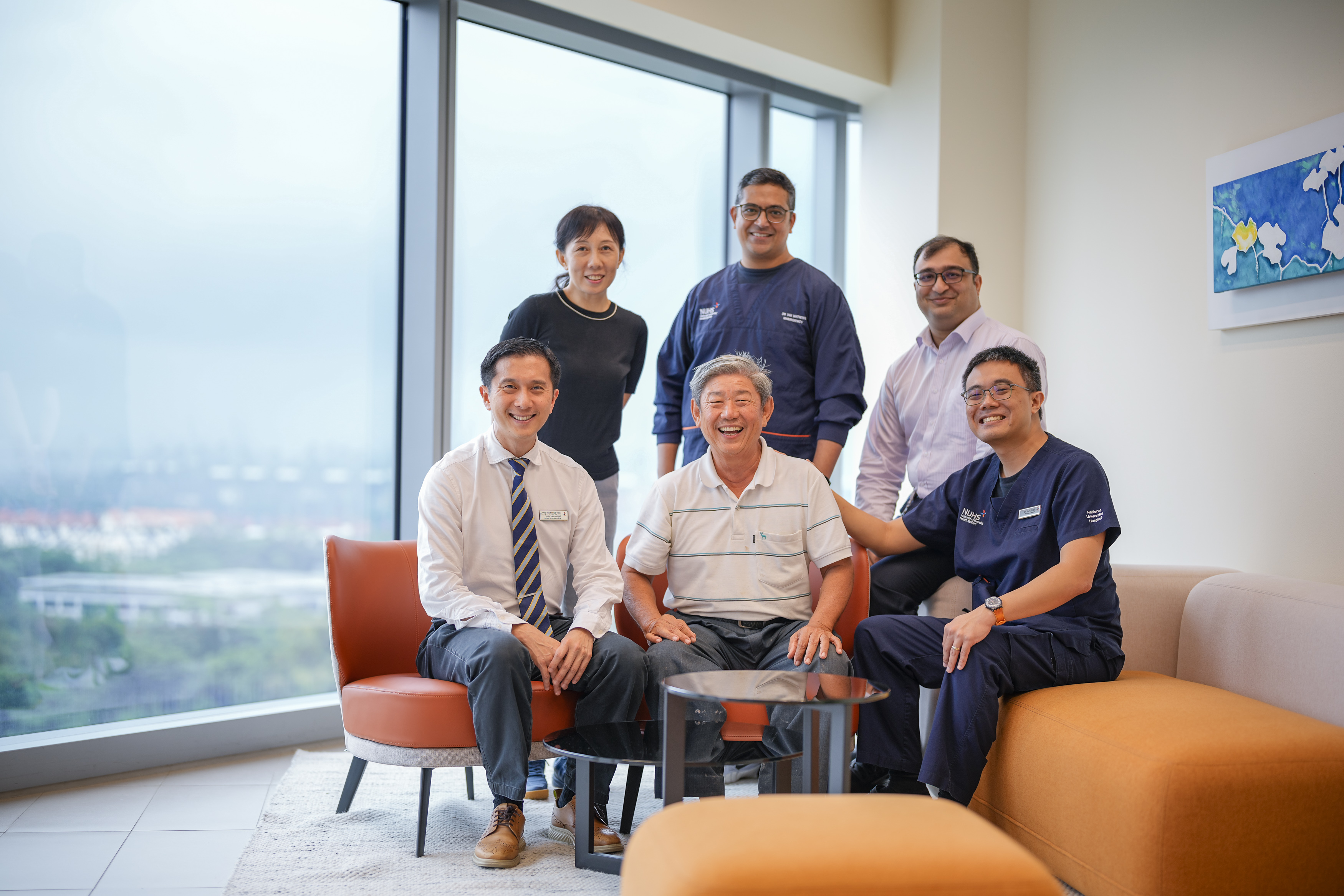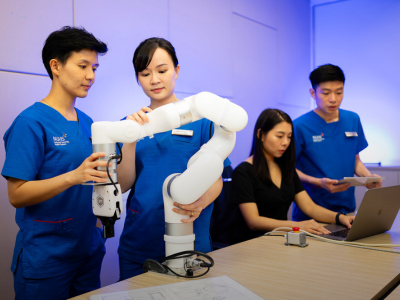Published on 12 October 2023
NUHS has developed a new AI tool that can flag out cases of hypercalcemia to doctors in real time, prompting faster medical interventions for patients.
Earlier in January this year, construction supervisor Mr Poh Chin Seng visited the Choa Chu Kang Polyclinic for a check-up after feeling fatigued, dizzy, and numb in his legs.
After a few tests, it was found that Mr Poh had an abnormally high level of calcium in his blood – a condition known as hypercalcemia.
The 66-year-old was subsequently admitted to the Emergency Department (ED) at National University Hospital (NUH) for further treatment. After his discharge, he was given an appointment for further follow-up at NUH.
But Mr Poh’s case of hypercalcemia was significantly more serious than initially thought.
The severity of his condition came to light when CalSense, a new artificial intelligence (AI) tool developed by the National University Health System (NUHS) to detect hypercalcemia in patients, flagged his case for surgical consideration.
As it turned out, Mr Poh had early-stage parathyroid cancer – a rare cancer of the parathyroid glands.
Mr Poh’s appointment was expedited, and in July, he underwent surgery to remove a 2.6cm parathyroid tumour along with the adjacent thyroid gland.
“CalSense aided in his care by allowing us to identify him early in the medical system and expedite his subsequent surgical appointments,” said Dr James Lee, Associate Consultant, Division of General Surgery (Endocrine & Thyroid Surgery), NUH. “Such early treatment offers Mr Poh a better chance for a positive outcome.
“Should intervention have been delayed for him, spread of the disease would have been catastrophic because there is little available alternative treatment other than surgery for parathyroid cancer.”
From January to July this year, over 1,600 patients at NUHS had their blood test flagged by CalSense - which is short for calcium sensing - as having abnormal calcium levels. The normal calcium range is around 2.2 to 2.6 millimoles per litre (mmol/L).
Hosted on NUHS' Endeavour AI platform, CalSense features a live dashboard that gathers, processes, and displays patients' blood test results.
In addition to measuring blood calcium levels, CalSense – which was developed with funding support from the Ministry of Health (MOH) – can analyse other investigative test results to identify the underlying cause of a patient’s hypercalcemia more accurately.

A/Prof Ngiam Kee Yuan, Group Chief Technology Officer, NUHS, explained, “CalSense allows us to automate a process that previously had to rely on doctors to run through blood test results when patients return for a clinical review.
“It flags out cases that require prompt interventions across our network of hospitals, national specialty centres and polyclinics in real time, reducing the administrative work of doctors and expediting medical care.”
A/Prof Ngiam added that, based on overseas data, surgical treatment for hypercalcemia occurs approximately four years after the presentation of symptoms.
He elaborated, “There are several factors contributing to the delay in receiving treatment for hypercalcemia. Firstly, its symptoms can be rather vague and non-specific, and there may be limited awareness of the condition at the primary care level compared to the specialist level.
“Additionally, healthcare systems may not always operate at maximum efficiency, resulting in delays during the patient referral and transfer process.
“But now, when a patient undergoes a calcium blood test in any of our institutions, CalSense will automatically detect any issues and promptly alert our clinicians for necessary follow-up.”
Dr Lee explained that facilitating early treatment for hypercalcemia is important, as it often leads to improved patient outcomes.
He shared, “If patients do not receive timely treatments, they may suffer complications from hypercalcemia, which may include osteoporosis and fractures, kidney stones, kidney failure, mental disorders and even potentially sudden cardiac death.
“For patients whose high calcium levels are related to cancer, this could also mean a delayed cancer diagnosis should this go uninvestigated.”
A/Prof Ngiam also revealed that they will be working on enhancing CalSense's capabilities to enable early detection of other diseases like colorectal cancer and diabetes.
Another AI project that NUHS is set to roll-out is that of Pathfinder, which provides real-time insights into waiting time and bed occupancy rates.
The project, which is currently being trialled at NUH, tracks the waiting time of patients in the ED and offers predictive insights into daily attendance figures up to a month in advance.
This information will assist the ED in allocating their manpower more efficiently and could potentially enable clinicians to identify emerging trends early, such as the outbreak of a virus in a specific area.
Dr Ian Mathews, Deputy Group Chief Technology Officer, NUHS, and Senior Consultant, Department of Emergency Medicine, NUH, said, “This project will empower us to make more informed decisions about how best to allocate our resources, including manpower, hospital bed utilisation and the coordination of essential support services.”
In consultation with A/Prof Ngiam Kee Yuan, Group Chief Technology Officer, NUHS, Dr James Lee, Assistant Group Chief Technology Officer, NUHS, Dr Ian Mathews, Deputy Group Chief Technology Officer, NUHS.

-(400-x-300-px)-(600-x-500-px)-(1200-x-550-px).png?sfvrsn=bccc8221_1)


